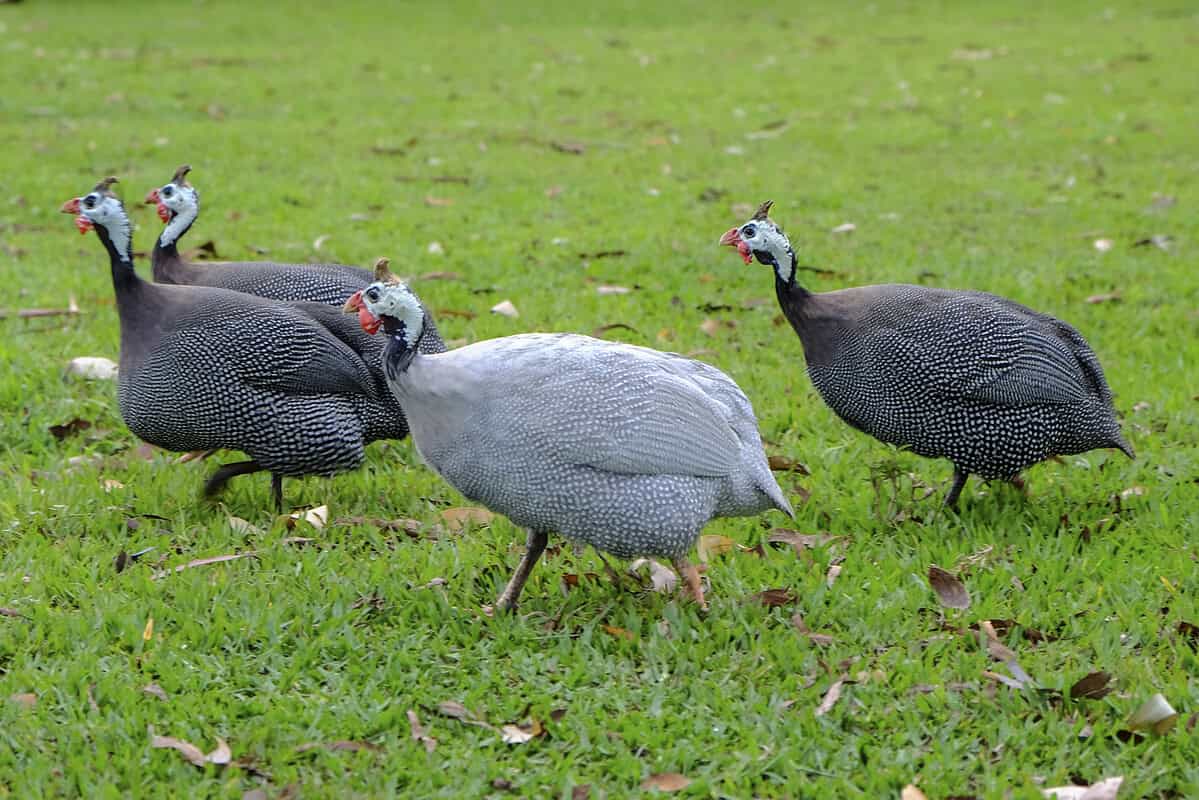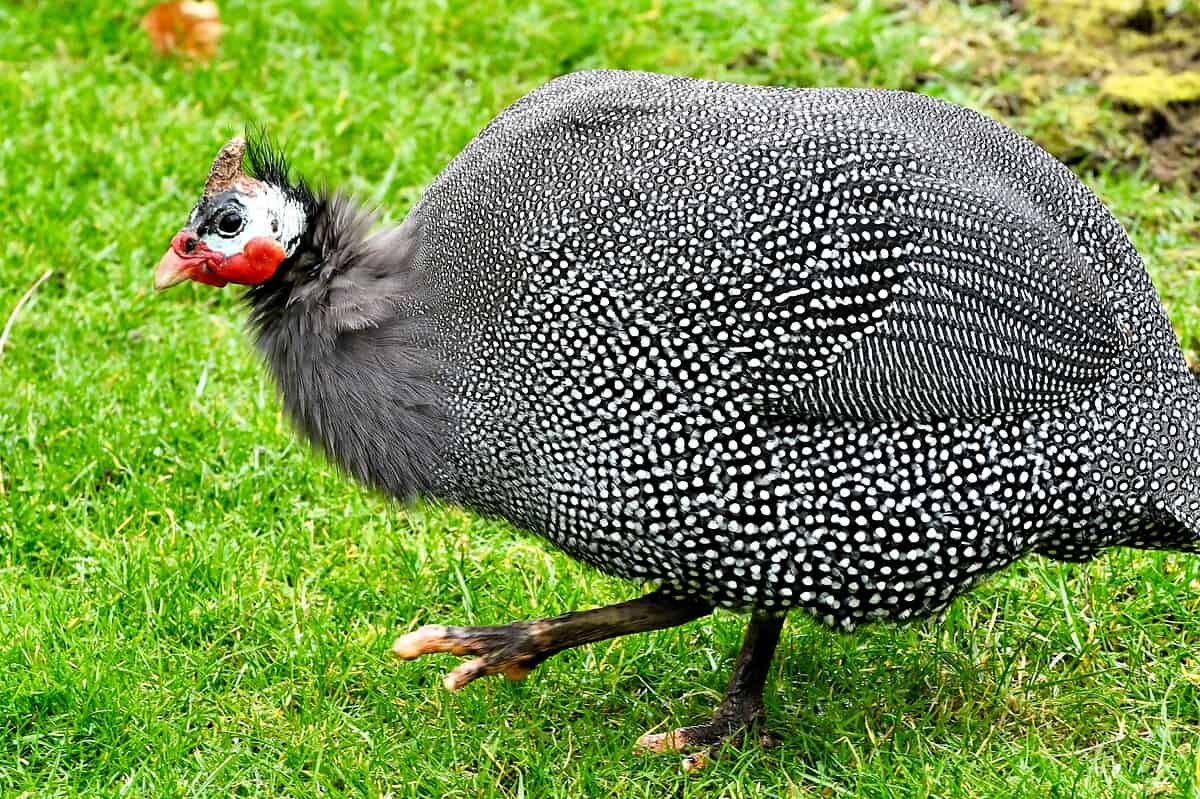The Guinea Fowl (Numida meleagris) is a domesticated bird native to Africa, recognized for its speckled gray plumage, helmet-like head, and loud, distinctive calls. Known for their strong flocking behavior and adaptability, these birds are often domesticated for pest control and as natural farm alarms.


HabitatThey prefer open woodlands, savannas, grasslands, farmlands, and scrublands, where they forage for insects, seeds, and small invertebrates. SizeThey are medium-sized birds, with a body length ranging from 40 to 71 cm (16 to 28 inches) and a weight between 700 g to 1.6 kg (1.5 to 3.5 lbs), making them compact yet hardy ground dwellers.. OffspringGuinea fowl typically lay between 12 to 20 eggs per clutch, with incubation lasting around 26 to 28 days. The chicks, known as keets, are precocial and able to move and feed themselves shortly after hatching. BehaviorThey are social, ground-dwelling birds that exhibit strong flocking behavior and a high level of alertness. They are known for their loud vocalizations, which serve as alarms to warn of potential threats. Despite being capable of flight, they prefer to run when disturbed and often roost in trees at night for safety. DietGuinea fowl are omnivorous, feeding on seeds, grains, fruits, insects, worms, and small invertebrates; their natural foraging behavior makes them especially useful in controlling pests like ticks and crop-damaging insects. |










